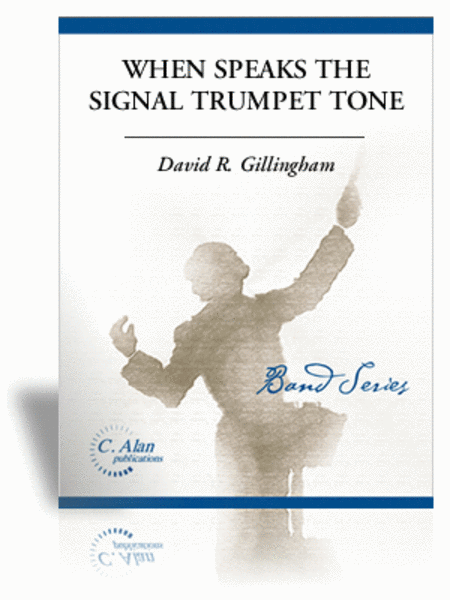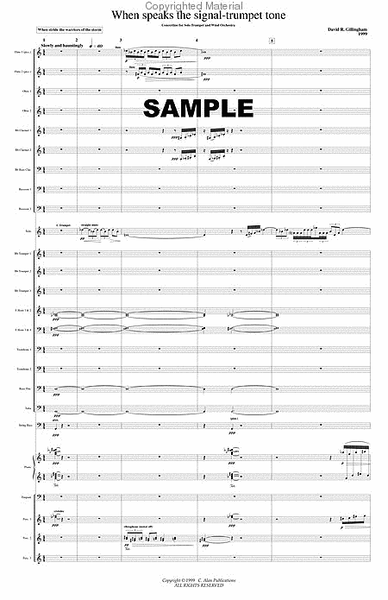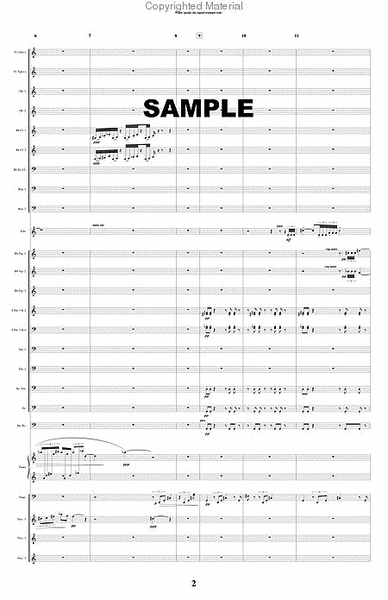When Speaks the Signal-Trumpet Tone (score only)
Trumpet Feature
-
Ships in 3 to 4 weeks
Details
Description
SKU: CN.03351
Trumpet Feature. Composed by David Gillingham. Score only. Duration 18:50. Published by C. Alan Publications (CN.03351).It is said that perhaps the greatest Americans are the ones who fought in the most intense and important battle of the 20th century, World War II. Honor those who died and those who survived the horrors with this masterpiece for solo trumpet and concert band.
The three movements or sections of When Speaks the Signal-Trumpet Tone are continuous without pause. Movement I, "When stride the warriors of the storm" begins with a slow introductory section featuring undulating thirds in the winds, various percussion colors and rather militaristic motivic material coupled with the metallic articulations of the hi-hat. A contrasting secondary theme balances the movement with longing expressiveness which perhaps is suggestive of the homesickness of the G.I. alone on the foreign battlefield. "By angel hands to valor given," the second movement, begins with a snare drum roll followed by the solemn tom-toms. The movement is designed to evoke the image of a funeral procession to a military cemetery for the burial of a fallen comrade. Solo flugelhorn aptly shapes the melodic dirge. Toward the end of the movement a sweet, yet mournful melody emerges eulogizing the fallen comrade and signifying that he is "home" again. The final movement, "Shall thy proud stars resplendent shine" should evoke feelings of joy, victory and patriotism. The ascending pentachords in the solo piccolo trumpet with the four-note motive comprised of a perfect fifth followed by a descending second are the basis for most of the melodic material of the movement. Contrasting this main thematic material in a sort of rondo-like structure is a chorale, heard only by the wind orchestra throughout the movement, which hopefully carries all the emotion and glory of victory. - David R. Gillingham.



 Share
Share